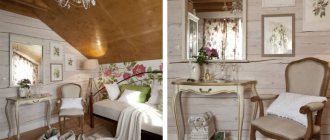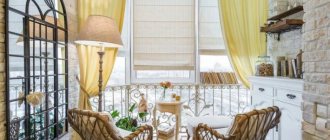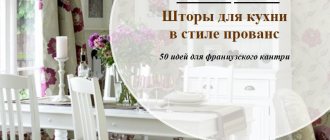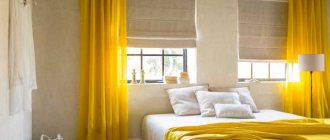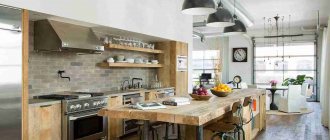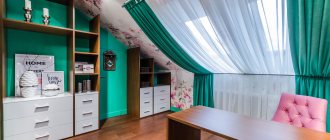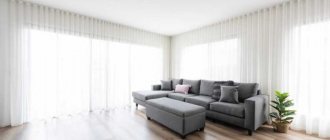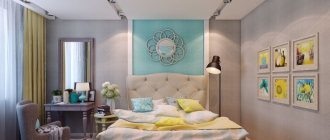2019-06-13
Author: Belfan
From this article you will learn:
- What are the characteristic features of the Provence style in the interior?
- How to decorate a living room interior in Provence style
- What is remarkable about the interior of a bedroom in Provence style
- How to decorate a hallway in Provence style
- What is characteristic of a Provence style bathroom interior?
- How to use Provence style in the interior of a country house
- How to create an interior in Provence style with your own hands
In modern design there is a huge selection of different directions, each of which is interesting in its own way. One of the most popular trends is Provence, which is based on a combination of simplicity and sophistication. Furniture, finishing materials, colors and decor - everything here is designed to create a unique, cozy and at the same time practical interior. You can learn about what features distinguish the Provence style in the interior from our article.
Style Features
The coziness and comfort achieved by this design harmoniously combines the simplicity of rural design and the light sophistication of fashionable Parisian salons.
The style itself owes its appearance to the court ladies and gentlemen of France, who periodically went to their own villages to take a break from the intrigues of the throne and relax surrounded by their own subjects.
Since those long ago, interior design in the Provence style has not changed much. It is still characterized by:
- soft pastel colors;
- using natural materials;
- vintage furniture and decor;
- abundance of light;
- high ceilings and spaciousness.
The style should create the impression of a cozy space, not burdened with complex solutions. It will be comfortable for people of any age.
No. 5. Ceiling finishing
The ceiling decoration also uses natural materials in calm shades without gloss. The ideal option is plaster, smooth or textured. You can replace it with paint, and if the surface of the ceiling is not very good at all, then a stretch ceiling will do, but choose only a matte, plain canvas.
If the height of the ceilings allows, then you can decorate them with wooden beams, but do not choose too dark colors - a beige or light brown shade will be most appropriate.
Walls
Wall surfaces are designed:
- paint;
- simple plaster;
- wooden panels.
At the same time, small uneven finishes will give the walls an additional charm of antiquity and manual labor. A brick wall made of white or red painted brick looks stylish. Most often, this option is used to decorate one wall.
Wallpaper in the Provence style in the interior is characterized by a light background on which floral patterns are freely arranged. In more formal rooms, a thin strip or checkered pattern is used.
Characteristic features of the style:
- Colors
- Materials
- Lighting
- Textile
- Furniture
- Forged parts
- Decor
This decor will appeal to those who are tired of the hustle and bustle of the big city. The cozy village atmosphere, soaked in the sun, is conducive to relaxation and peace. Provence style in the interior of an apartment is a combination of provincial antiquity and elegant luxury. It is suitable not only for country houses. An ordinary city one-room apartment or studio can also be transformed with the help of simple techniques. Let's list the main recognizable features that you can rely on when creating a design.
Instagram @design_by_tolsh
Instagram @maria_art_interior
Instagram @provans_like
Furniture in Provence style
Furniture in the Provence style is a unique combination of simplicity and elegance. To create an authentic design, they use vintage furniture that can be found in the attics of village houses. Small abrasions and restored chips will add additional antique charm to the furniture.
In order not to spend money on buying expensive antiques in special showrooms, you can purchase the most ordinary sets and artificially age them with special varnishes, cover them with paint and decorate them using decoupage napkins.
Furniture items are distinguished by simple shapes and finished lines. They can be quite crude and give the impression of items made independently, somewhere in a home workshop. Carved legs and facades, floral decoration, bronze or porcelain fittings give such items the necessary grace.
Light-colored wood will create a feeling of spaciousness and light. Sometimes it is additionally coated with a thin layer of light paint, through which the original material will be visible.
Rattan wicker items will be a non-standard furniture option. Such cozy chairs are usually complemented by a large number of pillows or knitted blankets.
For Provence there are no restrictions on the amount of furniture used. In large rooms, in addition to the standard set, you can place small chests of drawers, sideboards, and buffets.
Ottomans, couches, chairs, and armchairs placed throughout the house invite apartment residents and guests to sit down and enjoy the comfort of the interior.
Exterior decoration of the house
Provincial European houses can be found in hundreds of pictures. In the most typical of them, a person will see a white wall, green or brown shutters, a flowerpot on the windowsill and a parked bicycle. In reality, furnishing a private home includes many components, and the result should look neat and stylish.
Exterior finishing begins with the choice of roofing. Regular orange tiles are sometimes replaced with gray and light pink ones. The higher the roof slope, the less desirable non-primary options become. Ideally, the roof should be low.
One third of the full façade of a provincial house is covered with a strip of climbing plants; it has shutters, window sills with flower beds and multi-section windows, ideally made of wood. Stone and wood are used for decoration, and modern and artificial materials are not used at all. All high-tech elements are securely hidden.
Number of floors of a house in Provence style
Stylized provincial houses are built without mandatory similarity criteria. Freedom of thought is limited only by materials. Everyone chooses the number of floors, shape and color for themselves.
In a simple budget version, the house has one floor, a large entrance hall, a living room and a basement. In two-story buildings there is always a spacious kitchen, more than 15 square meters, 1 or 2 bedrooms on the second floor. In buildings on 2 floors with a rectangular orientation, there are 2 spacious halls below and above. Larger rooms add touches of luxury. In huge mansions on 2-3 floors, rooms are distributed on several sides, with many corridors.
The number of storeys also includes an attic. For a house with a provincial style, a spacious attic is only a plus. There they set up one or two spacious rooms, bright and with original decoration.
Facade finishing
Unnatural materials should be immediately excluded from the list of materials. When building designer houses, they are content only with a natural set of raw materials:
- a natural stone;
- clay tiles;
- tree;
- metal;
- decorative plaster.
Mostly, irregularly shaped building stone and wild stone with uneven edges are used. As an alternative, they use artificial ones, and only to save money.
The walls and roof are finished completely differently from the interior. If everything inside should be neat and soft, then rough execution on the outside will be quite normal. The cladding is laid carefully, but the materials themselves may have distinct defects on the surface.
Sometimes designers deliberately add chaos to neat rows. There is nothing strange about this, because from the outside, Provencal houses look like Italian Mediterranean-style houses.
The overall palette is left light with the addition of dark elements. The facade is decorated with wooden beams and forged metal.
Selection and installation of windows
The style is best combined with floor-to-ceiling French windows and double-leaf plastic windows with a thin profile. Shutters are installed together with them - traditional decor and at the same time protection from the sun. The ideal pitch between the lamellas is determined by the climate of the region. For hot areas choose small.
The size of the window is selected as large as possible, because in addition to rich lighting, the French provincial style needs a decorative window opening. Lighting will suffer due to the large number of segments that improve aesthetics.
On the ground floor terraces there are panoramic windows and doors with a folding mechanism like an accordion. If the front entrance door is also present, then this does not violate the style concept.
In the Provence style, windows with a rounded top look more organic, so if possible, the opening is adjusted. In this regard, it is much better to build from scratch, because then you can take into account the nuances and implement your own layout, including size, shape, location and spacing between windows.
Illumination of the house and site
The house is illuminated with simple spotlights and lamps on the walls. Hanging lanterns and improvised torches add decorativeness.
The surrounding area is illuminated in an unusual way, and ideas are implemented at any time, and not just on New Year’s. Right in the middle of summer, the garden is decorated with large jars with candles inside, and as soon as the lighting gets tired, it is replaced, for example, with luminous lampshades, stars, and figures. Garlands are stretched along the veranda along the ceiling and floor. Light bulbs surround trees and gazebos, benches and windows. Illuminated curly bushes evoke great admiration among children and interest among adults. The main light source is placed at the base, and the smaller ones are hidden in the foliage. Illuminated baskets are hung on trees, which are filled with snow in winter and create a festive atmosphere for the New Year and Christmas.
Textiles in the interior
Home textiles will help create a feeling of home warmth and ancient comfort.
Light curtains made from natural fabrics complement large windows, practically not blocking the sun's rays and fresh air. They can be gathered into pretty folds, decorated with lambrequins and bows, light tiebacks and ribbons. Multi-layer curtains mounted on wooden or iron cornices with forged finials will look great.
Soft plain fabrics or materials with floral patterns, checks, stripes, repeating the wallpaper pattern or complementing the laconicism of the walls are welcome.
Upholstery of upholstered furniture is matched to curtains or walls. Sofas, armchairs, and couches are decorated with decorative pillows; tablecloths and napkins with embroidery or lace are laid out on the tables. The floors are decorated with soft carpets in light colors.
No. 3. Wall decoration
If the color scheme of the room should reflect the imprint of the sun, then the decoration and pieces of furniture should show the mark of time. In addition, when choosing a material, it is also necessary to take into account the requirement for its naturalness:
- the best choice would be textured plaster with imitation of chips and abrasions;
- painting the walls is a win-win option , but you must comply with the color scheme requirements;
- some of the walls can be covered with wooden panels , which are either painted in Provence colors or simply varnished to preserve the natural shade of the wood;
- brickwork It looks especially good around the fireplace, but is suitable for decorating any wall in the apartment. Often, designers deliberately leave a small gap in the brickwork when plastering walls, imitating the effect of antiquity;
- for finishing wet areas, use tiles of a natural shade without shine or stone;
- one of the walls in the living room can be painted by hand, depicting a typical Provençal landscape or floral pattern;
- a fresco can decorate one of the walls in the living room, bedroom or hallway ;
- Wallpaper is not usually used, but if you are a fan of it, you will choose canvases with a floral pattern.
Houses located in Provence have a special view from the window. No matter how hard you try, you can’t repeat it here, but there is a way out - one of the walls, for example, in the living room or kitchen, can be decorated with photo wallpaper depicting a lavender field , a neat French street or another typical landscape.
Decor
Provence, like all other rustic styles, loves a lot of decorative elements.
The following will look great in this interior:
- paintings with pastoral scenes or natural beauties in gilded frames;
- antique mirrors in wrought iron frames;
- caskets;
- vases;
- fresh or dried flowers;
- antique dolls;
- china;
- figurines;
- candlesticks;
- wicker baskets;
- handicraft items.
Homemade items of any kind are welcome. The most difficult thing in decorating Provence is to be able to stop without turning the room into a branch of the museum.
Provençal style and decor
The key task is not to overdo it with decorative elements. The interior of French country houses is characterized by seasoned vases, vintage frames and candlesticks, figurines and antique tableware. It is also worth mentioning the great love of Provence fans for wicker baskets. They can be used to store children's toys, books and clothes. As you can see, even decorative items can become original and functional helpers.
Bedroom design
Many supporters of this style attribute to it excessive asceticism. It has really smooth lines and a certain minimalism. But you can always decorate the walls with neat paintings with wooden frames or family photos. Speaking of painting, note that the Provence style is suitable for landscapes and vintage motifs. Modern modular paintings and abstractions have no place in a measured and smooth stylistic direction.
Kitchen combined with balcony
Lighting in Provence style
Provence requires a lot of light. Natural flow will come from large windows decorated with white frames. Artificial lighting will provide several levels of forced illumination.
The main element of lighting continues to be the ceiling chandelier. It is distinguished by its massiveness, which is imparted by a forged frame, and the lightness provided by glass and crystal pendants, fabric and wicker lampshades.
Wall sconces are matched to the tone of the main lamp. Imitations of candles or gas lamps will look great.
An excellent option for decorating a room would be cozy floor lamps, reminiscent of the romance of bygone times. They are placed everywhere, from the living room to the hallway.
All of the listed design techniques are suitable for use in all rooms. But small tricks will make each room even more cozy and “French”.
Main features and characteristics of Provence
Buildings in the Provence style look original and proud. There are stone and wooden, rectilinear and refined, simple and half-timbered, with a gable and multi-gable roof. In the historical homeland of the style, they liked to experiment with design, to stand out somehow, then the trend spread throughout Europe, and now people have such diversity.
The essence of the style can be felt in the interior. Whitened pastel colors, soft colors dominate there, and there is a lot of sunlight. Textiles and crafts add harmony. New furniture - neat, openwork and at the same time simple - is accompanied by artificially aged objects and genuine antiques from past times. A full-fledged provincial style is not complete without painting, repeating patterns, and simple colors like polka dots. Elements of luxury came to Provence from classicism and baroque.
The style will be incomplete without fresh flowers: discreet combinations are needed in the area, and diversity is valued in the rooms.
Style color scheme
Natural shades form its basis. There is no place in the style for sharp colors, especially for such transitions. The hallmark of the provincial style is considered to be light, pastel and bleached shades, because in the vast majority of design trends there is a desire for ideal colors. Provence, in fact, “plays” on this contrast. Whiteness is enhanced by abrasion, sometimes by an expressive coating. Metal products with dark corrosion and green patina are also used. Dark colors are left unused or introduced through brown and gray palettes. More often than others, the style contains white, cream, light and dark beige, coffee, yellow, and blue. The second group includes pale tones of light green, pink, and purple. The color of individual rooms consists of 2-3 main shades and secondary inclusions, thus preventing color oversaturation.
Typical finishing materials
They use wood, stone, and terracotta tiles as much as possible, ignoring synthetic raw materials such as laminate and plastic. The walls are decorated with traditional materials:
- wallpaper;
- whitewashing;
- paint;
- plaster;
- clapboard.
It won’t be a problem if the lining is made of imitation wood and the wallpaper is non-woven, but only certain areas can be decorated this way. Oversaturation of the house with synthetics will lead to the fact that anyone will notice unnatural materials, even those who have never tried to distinguish them by eye. Wallpaper with natural motifs and white paint will always be win-win options. Inside the rooms, the artistic roughness of the bark beetle plaster and the few elements of the brickwork look organic.
Unfinished boards are painted white on their own and placed in any configuration. Creative ideas are realized with mosaics made of tiles and colored glass, and surface drawings.
Walls
The finishing of vertical surfaces is not complete without wood - in interior doors, as well as in window frames, if you follow the classic design.
Paint, wallpaper and plaster are used with equal success as the main cladding. After painting, the effects of a faded coating are created on the walls. Sometimes they draw on wallpaper. Thoughtful and chaotic textures are created on plaster.
In the bedroom and nursery, the same materials are used, but less often plaster and more often lining. In toilets and bathrooms, despite all the variety of waterproof materials, the usual tiles are laid. Patterned and painted products are given preference, and ideally, small mosaics are laid out.
The corridor and living room are done in white or cream, sometimes in shades of coffee. They decorate the rooms as expensively as possible. They buy materials that are expensive and of high quality, without artificially deteriorating their condition, and certainly not trying to save money. It’s not a problem if a small amount of gilding “breaks through” into the interior.
Floor
Flooring finishing options:
- Wood: kitchen, living room, bedroom, children's room, hallway.
- Tiles: kitchen, bathrooms, hallway, bedroom.
Owners will not have much choice, because artificial materials will ruin the appearance of the house. Of course, the rules are sometimes ignored and laminate and linoleum are used, but ideally the choice should lie between different levels of quality of natural raw materials. Painted boards are used to make the floor as white as everything else. Brown and gray material will make a great contrast in a bedroom or nursery. A smooth, neat coating is placed inside the house. Wood with roughness and small defects is used to decorate verandas and terraces. Floors are covered with carpets in about half of the cases.
It can be difficult to choose between wood and tiles, as well as their combination. There is no point in tiling the hallway if there is a wooden floor anywhere in the house. Solid wood flooring in all corridors harmoniously transitions into tiled flooring in the kitchen, bathrooms, and bedroom.
Ceiling
In terms of material color, you won’t have to choose for a long time. There is no point in painting the ceiling anything other than white; as a last resort, they are more original and choose a shade of cream. The materials used are plaster, paint, and whitewash.
In the narrow sense, wood is used. Sometimes there are beams on the ceiling, and if there are none, then several strips of false strips will not interfere. The sharp contrast of the beams with the ceiling does not look the best, so they are selected to match or slightly darker.
Texture is added to the ceiling covering. Together with the provincial style, satin looks best, combining a discreet matte structure and a glossy, light-scattering structure.
Only a few make level ceilings. They look strange in a provincial interior. Historical elements such as stucco molding, caissons and large moldings are always left and played with openwork forms of furniture and fabrics.
Furniture selection
The external simplicity of the style does not mean that you need to buy old, sloppy or angular furniture. Connoisseurs of Provence recommend products in pastel colors, made of noble wood, with attractive lines, ideally with carvings. Artificially aged furniture with evenly distributed imperfections is suitable. Fine and shabby items are not purchased for the same room. At least they make an organic transition within a large space. You shouldn’t pass by painted models, which will add picturesqueness and homeliness.
Armchairs for a provincial setting are selected according to color criteria. Light-colored items such as wicker, wood, or forged with paint are suitable.
The size of the furniture is selected according to the situation, but tradition speaks of compact models as more preferable. Designers allow a combination of furniture in the spirit of Provence with modern wall decoration.
Decoration and textiles
The interior is filled with handmade items. Handkerchiefs and napkins decorate shelves and tables. Toy animals and plant fruits dilute the strict atmosphere. Textiles are decorated with lace. Magnets attach to refrigerators. Chairs and sofas are covered with covers and capes. In each room there are at least 1-2 pots with live plants. Compositions of dry twigs and baguettes will not hurt. All this does not mean that the decor needs to be oversaturated with interesting details; there are other styles for this. Provence is primarily a living, low-tech environment.
Textiles of different colors and from different fabrics are welcome. Products made from natural raw materials such as linen or cotton are suitable. Textiles are used on sofas, lamps, beds, tables, shelves, and also as curtains.
Lighting Features
There are 2 requirements for lighting:
- Give as much natural light as possible.
- Make artificial lighting bright or dim depending on the situation.
A provincial-style home is filled with natural light, as well as white and yellow light from fixtures. Uniform distribution of light throughout the room is ensured by the correct combination of lamps. They don’t use anything special; they use simple wall and floor fixtures, chandeliers, and rotating devices. For atmosphere, add light bulbs that imitate candles. The light density is kept at the desired level by reflective surfaces of decor, mirrors, and silver objects. They try to use lighting to enlarge narrow corridors and kitchens - if there is little free space left in them in the layout of the house. In almost all rooms, standard wrought-iron chandeliers are used, in small ones they are limited to simple ones, and in large ones they purchase multi-level ones. External lighting is provided with wall lamps and imitation torches. A simple lamp illumination is hung above the terrace.
Kitchen in Provence style
The Provence style in the kitchen interior will create a joyful mood that will help you prepare delicious food and eat it with pleasure. The kitchen is most often combined with the dining room, and modern household appliances are hidden behind cabinet fronts or items are selected in a retro style.
Small “cafe” curtains will transport visitors to a village hut, where the decor will be painted plates, jars with spices, pickles and jams, ancient Turks and hand mills.
No. 4. Floor finishing
It is advisable to use natural boards painted white or another light shade for finishing floors. It’s even better if there are small irregularities on the tree, which should convey a trace of time. It is important that they do not interfere with free and safe movement.
To save money, you can use any imitation of solid wood. For example, parquet or laminate. The effect, of course, will not be the same, but if you follow the color scheme, it will turn out well.
It is also possible to use terracotta tiles with a slightly wiped surface. Preference is given to large format tiles. In the kitchen, you can put a small rug with thick short pile on top of it.
Living room in Provence style
The Provence style in the living room interior will create a soft corner and fireplace, shelves and chests of drawers. A fluffy carpet or burlap rug will look stylish on the floor. Flowers in vases or living plants will decorate the guest room.
What is Provence style and what is its origin
As you might guess, the name of the style direction comes from the name of the French province. This area is world famous for its picturesque nature with fields of lavender, endless blue skies and crystal clear waters.
Artists and poets flock here, because these places are inspiration itself
The inhabitants of Provence are famous for their hospitality and the special charm of their homes, which are always very cozy. A slight touch of antiquity, the aroma of butter booths and tart French wine - once you visit here, you will hopelessly fall in love with Provence and will definitely want to reproduce this atmosphere in your home. This is possible if you follow all the canons of style.
Creating such interiors requires the author to have refined taste and a desire for beauty.
The main features of the Provencal style in the interior:
- light colors in the design of walls, ceilings and floors;
- traces of noble antiquity on interior items;
- wall decoration using ceramic and brick or stone tiles;
- use of natural wood, wicker, stone;
- an abundance of high-quality textiles with lace and embroidery;
- use of forged elements as decoration;
- decorating rooms with numerous accessories.
Provence is a very cozy style. It’s hard to imagine it in a bachelor’s apartment, but for married couples living in a country house, it’s ideal
Bedroom in Provence style
For the bedroom it is better to reduce the amount of furniture. A wide bed (with a base and headboard made of wood or metal) and a small chest of drawers will suffice here. A dressing table is placed for the beautiful inhabitant of the bedroom.
The textiles are decorated with ruffles, flounces, puffs, and lace.
Additional decor
Unlike other styles, in which the decor must be approached very carefully, Provence gives wide scope for activity. Firstly, it’s difficult to overdo it with the amount of decor (although still be careful and remember a sense of proportion). Secondly, in this style, like in no other, decorative elements made by yourself are very appropriate. Embroidery, knitting - if you like all this, you can fill the space with cute little things created by hand, and the more valuable the coziness you create will be. But here we want to warn you: if your level is very far from high, and your knitted napkins remain exactly the same as you made them in labor lessons in the 7th grade, it is better to order a suitable item from a professional or buy a finished product.
Marine style unexpectedly successfully combines with Provence. Therefore, you can use shells, starfish, ropes and wooden sextants for decoration.
Lighting is a separate decorative element. A properly selected chandelier will play into the hands of all other pieces of furniture, and floor lamps, floor lamps, sconces and cozy table lamps will complement the room with warm local light.
Provence is characterized by shelving and sideboards, behind or without glass. All these shelves are filled with beautiful dishes, figurines, clay decor and all sorts of trinkets dear to the heart. Open shelves for dinner plates and mugs are common in this style. Of course, the fight against dust will take on a larger scale, but in the name of beauty something will have to be sacrificed.
But the most recognizable element of the style is a lavender bouquet, artificial or in the form of a herbarium. You can decorate rooms with other herbs, dried or live. You can depict them in paintings and hang them around the house as decoration.
Provence style for a children's room
The style will be a wonderful decoration for a child's room. It is perfect for young princesses and romantically minded ladies.
To decorate the room of a boy or children of different sexes, choose a blue, green or soft brown color scheme, a pattern in the form of stripes.
Interior decoration of rooms
You will have to work almost as much on the inside of the house as on its construction. If you set a goal to make a house in the spirit of the French province, you will have to limit yourself to convenient solutions so as not to violate the gamut, textural unity, and restrictions on materials and shapes.
For those who take the task seriously, all that remains is to see it through to the end. It’s worth starting with the hallway and corridors and their transition into living rooms. At this stage, you can roughly understand why different types of finishing are good, how much of it will be needed, and how much you will have to expect. Bedrooms are made light, cozy, only with light walls. Children's rooms are designed taking into account what is best for the child. The decoration of a boy or girl’s room should be done with their participation. Bathroom accessories should be placed intelligently, avoiding clutter.
Hallway/corridor
They also create an interesting, predisposing environment in the hallway. Provence borrowed from classicism solid white and light yellow color options, which are used in entrance rooms. In Provence-style houses, it is the combination of the hallway and living room that looks most expensive. The furniture is selected to completely match the walls, of medium size and with decorative qualities. Clothes and shoes are placed not only inside, but also in a visible place - this way the color is preserved.
In large, truly spacious houses there is always a system of corridors, which is coordinated with the design of the hallway. At the same time, new colors and decor are intermittently added. The corridors along the external walls are illuminated by wide windows, which are provided at the design stage. The result is something like street galleries, filled with sun and offering a beautiful view of the garden. In the case of a ready-made building, bright artificial lighting will suffice.
Living room
Sunlight, or rather its abundance, is important for the hall. Especially for a room in Provence style. There is never too much natural light in this regard. They buy shutters for the living room, but close them occasionally, and only use them as a decorative device. The walls should remain bright. They are decorated with paints or wallpaper of a muted pale color, less often with boards. Surfaces are kept neat. Rough floors and walls will not work, no matter how close the Provence and loft styles have been in recent years. Carpets in the style are used at will, and are guided by practicality. Both solutions have aesthetics, but they are different, but in general it is more convenient without carpets.
Provence is not complete without small items. Handmade toys, boxes, wicker baskets, bird cages. The surface is filled with unusual things of small size and beautiful content.
Kitchen
They focus on milky, light brown, gray, pale blue and pale green colors. Mostly small furniture and appliances are purchased. An exception is made only for dining tables.
In the American analogue of the provincial style, country music allows more “liberties”. Bedside tables and cabinets can be bulky if desired. The main approach is no different - interesting execution and lack of technological perfection.
In traditional Provence there is always a place for textiles and paper, old-fashioned and literally old and worn curtains. At first glance, unsightly things like cutlery, as well as juicy sets of fruits and vegetables are placed on top. The walls are covered with paint, whitewash or wallpaper, it doesn’t matter exactly how. In a “provincial” kitchen, oddly enough, you can hang a classic chandelier - an option instead of a lampshade.
Bedroom
The walls are lined with light-colored wallpaper. The floor is made the same light or dark for contrast. The ceiling is painted white, and the chandelier is selected in a classic silver color. If necessary, luxury elements on the walls and above will do. A bedroom in Provence style can be made from a classic room, which cannot be said about the living room and kitchen.
A small wardrobe with glass and a partition for changing clothes - depending on the size of the room - would not hurt in the bedroom. Textiles are added as much as possible, and a chair or chairs are specially purchased for this purpose. Curtains are purchased not only for windows, but also decorative ones for the wall behind the bed.
More and more often they add notes of sloppiness. In this case, the floor is made of planks and untreated, and untreated areas are left on the ceiling. In a similar way, they “beat” the beams, if present. The area near the bed is covered with unremarkable carpets.
Children's
For girls, they select decorations with patterns, frills and different shapes. They focus on infantility and fashionable items. The walls are covered with paintings, photographs, and applications. The shades chosen are white, pale yellow, bleached pink and green. The background range is kept in one single color. Buy a simpler lamp, but a classic one will do if necessary.
The “provincial” setting is less suitable for boys. They need a more dynamic, playful interior. The way out of the situation would be to finish it with a lot of wood and panels. Colors include blue, blue, white and cream. Any of them can be primary and additional. A striped version with a wide or narrow design will look more mature and strict. It’s definitely not worth buying a classic chandelier. In the room of a little boy or teenager, conceptual options look more logical.
Bathroom and toilet
Provence style bathrooms have the following features:
- Only light design;
- Many options for wall decoration;
- Ideally there is a window.
Provincial-style bathrooms often become cluttered. This is due to the relative freedom of design. Household appliances, classic and antique items, and storage sections are carried there. You should refrain from piling up different utensils, and instead choose a minimalist set. Proper design means, first of all, choosing an interesting background. They use several types of painted tiles, panels, moisture-resistant and liquid wallpaper. Colors are selected only light or pale, and only small touches may differ in characteristics.
Toilets are finished with tiles or white brickwork, whitewash. They use a lot of iron. A mirror is hung on the side - if possible. A hanging cabinet with glass doors and a bedside table with the same glass fronts wouldn't hurt.
Hallway in Provence style
The entrance area in Provence style will welcome guests with soft couches or ottomans, a large mirror, and floor vases. Photos of Provence style in the interior will help you better understand this amazing design option and find the most suitable details for yourself.
Lighting
If decoration in the Provence style is planned at the design stage of a private house, then you need to remember an important part of this style - huge stained glass windows, often from ceiling to floor. Provence requires an abundance of sunlight in the rooms and, taking care of this in advance, you can avoid a lot of hassle.
If the interior is created in a ready-made house with standard windows and a lack of natural light, then you can deceive your eyesight by using mirrors and bright lamps to create the illusion of a southern, bright interior. Mirrored fake windows, mirrored back walls of display cabinets, or simply large mirrors will help turn a dark room into a sunny one. Light shades of walls, floors and ceilings, and white or soft beige furniture will also help to add light.
Forged lamps with beautiful glass shades, elaborate classic sconces, floor lamps and table lamps with textile lampshades are perfect for this interior . The only rule is the absence of gilding and chrome, because Provence is alien to both the luxury and richness of the Baroque, as well as the laconicism and roughness of the loft and industrial.
Simple, stylish furniture
French country furniture balances on the border separating elegance and functionality. Although it is largely free of the embellishment that has historically been the hallmark of French design, it is overall elegant. And although for rural residents, especially in the past, the main thing was that each piece of furniture clearly performed its assigned functions, it was not uncommon to have multifunctional pieces or furnishings that could easily be moved to where they were most needed at the moment.
Stay away from overly monotonous furniture sets. Instead, mix wooden furniture with different surface finishes and metal ones that add an antique touch to the interior.
The seating area in this photo epitomizes the French Country approach to furniture. Upholstered chairs with armrests, a table and shelves merge in refined harmony, connected by a common color scheme of soft white and bluish-gray shades. These pieces of furniture have decorative flourishes that elevate them beyond strict practicality, but their elegance is in no way ostentatious or exaggerated.
How to decorate the Provence style in the interior with your own hands.
From scrap materials, every needlewoman can make unique objects using the decoupage technique, giving the furniture an artificially aged look. In the kitchen, hand-painted dishes or table decorations will give the room a unique atmosphere of French comfort. Using elegant lace and ribbons, you can decorate the curtains.
You can also decorate your own kitchen towels in a provincial theme using embroidery and lace. Decorative pillows look good with floral themes or lace ribbons on sofas and armchairs.
And knitted pillowcases and blankets will enhance the appearance of textiles. Items made with love and soul reflect family values. Touching photographs of family members, framed in wooden frames, will decorate the walls of the living room.
The effect of antiquity in Provence.
In addition, you need to pay special attention to creating an antique effect. If you don't have the opportunity to buy antique pieces of furniture, you can get this effect yourself. The main thing is that in your rooms there are things that look like they have been influenced by time.
You should not use too elegant or expensive items, because the main idea is to achieve an atmosphere of provincial life, a little rough simplicity and ease in design. It is very important to remember that all metal elements are used only as a complement to wooden parts, thanks to which they will look very respectable.
Whisper of time
In a style that is a reflection of longevity and tradition, new furniture and accessories will seem somewhat alien. Provence requires a little rust and dust. Items should look as if they have faithfully served a person for many years.
Avoid shiny metal in favor of wrought iron, bronze or pewter, which is fine if the metal items show dents and other signs of frequent use. It’s not a big deal if there are slightly worn bedspreads or pillows with scuff marks in the house.
This cozy room looks like every item in it has a story - it's like the coolest second-hand collection ever. Even on new objects the presence of centuries-old dust can be felt. The shabby wood of the legs looks great against the background of faded fabric colors.
Many faces of fabrics
Just like furniture, French Country fabrics create an artful, eye-catching potpourri. The quintessence of this style is the veil, but you should not neglect other materials, checkered and striped, floral and plain. Textured fabrics such as linen and matlasse, as well as famous French tapestries, add tactile interest to the room.
